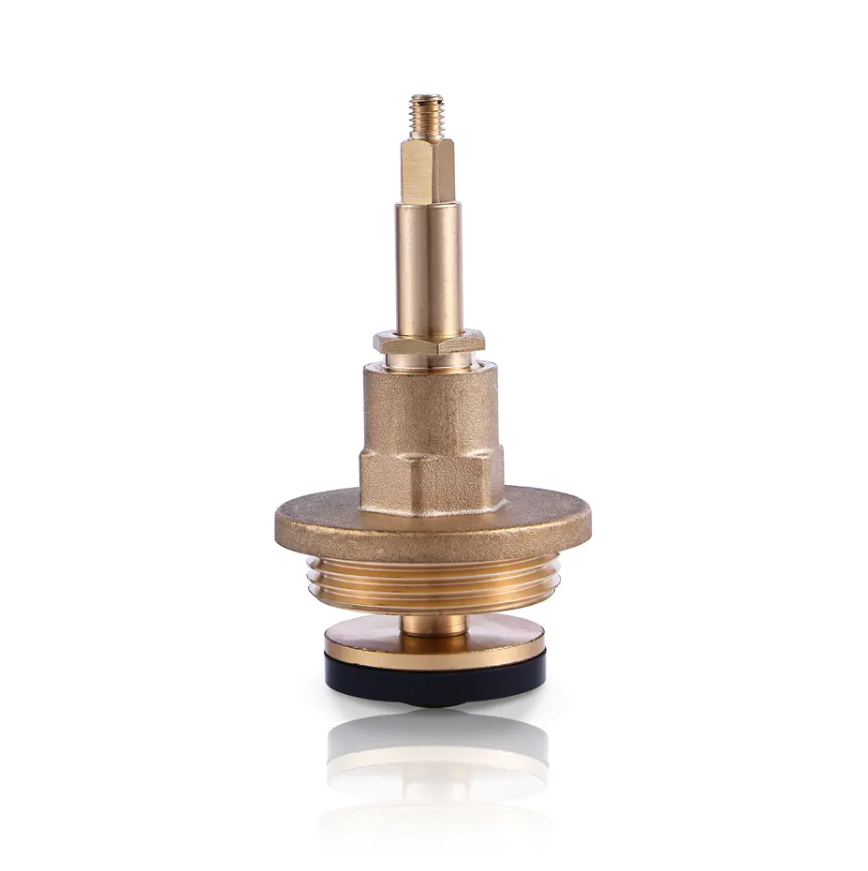The performance of the Copper Faucet Valve Core in high-temperature environments is a significant factor in determining its suitability for various plumbing applications. Copper, being a material with excellent thermal conductivity, is often chosen for its ability to handle heat. However, the performance of Copper Faucet Valve Cores under such conditions requires a deeper analysis to ensure they meet the demands of modern plumbing systems.
Copper Faucet Valve Cores are designed to control the flow of water in faucets and other plumbing fixtures. They are typically subjected to a range of temperatures, from cold to hot, depending on the application. In high-temperature settings, such as in hot water systems or areas with high ambient temperatures, the performance of these valve cores can be affected in several ways.
Firstly, the material properties of copper change with temperature. Copper expands when heated, which can affect the fit and密封性 of the Copper Faucet Valve Core within the faucet. This expansion can lead to leaks if the valve core is not designed to accommodate such changes. Manufacturers of Copper Faucet Valve Cores must, therefore, consider the thermal expansion of copper when designing their products to ensure they remain effective in high-temperature conditions.
Secondly, the seals and other components associated with Copper Faucet Valve Cores can also be affected by heat. Rubber and plastic seals, for example, may degrade over time when exposed to high temperatures, leading to reduced performance and potential failure of the valve core. This degradation can result in leaks and reduced water flow, compromising the functionality of the faucet.
Moreover, the structural integrity of the Copper Faucet Valve Core itself is crucial in high-temperature environments. Prolonged exposure to heat can cause the copper to become more brittle, which may lead to cracks or breaks in the valve core. This can result in water leakage and the need for replacement, which is not only inconvenient but also costly.
The performance of Copper Faucet Valve Cores in high-temperature conditions is also influenced by the water quality. Hard water, which contains high levels of minerals, can lead to the buildup of scale on the valve core. This scale can restrict the movement of the valve core and affect its ability to control water flow effectively. In high-temperature environments, the formation of scale can be accelerated, further impacting the performance of the Copper Faucet Valve Core.
To ensure the optimal performance of Copper Faucet Valve Cores in high-temperature environments, manufacturers often use specialized materials and designs. For instance, some valve cores are made with a brass or stainless steel insert that is more resistant to heat and corrosion. Additionally, high-quality seals made from materials that can withstand high temperatures are used to prevent degradation and maintain the valve core's performance.
In conclusion, the performance of Copper Faucet Valve Cores in high-temperature environments is a complex issue that involves material science, engineering, and an understanding of water chemistry. By considering the effects of heat on copper and its associated components, manufacturers can design Copper Faucet Valve Cores that are more resilient to high-temperature conditions. This resilience is essential for maintaining the efficiency and reliability of faucets and other plumbing fixtures in homes and commercial settings where high-temperature water is a common feature.
https://www.brassvalvecore.com/product/copper-valve-core/copper-faucet-valve-core/

